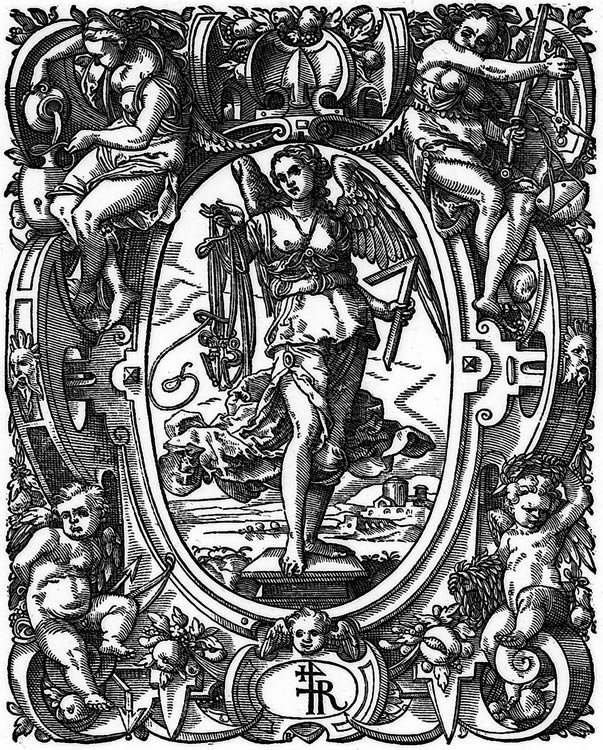LXXX Tobias Stimmer (continued)

The exhibition Spätrenaissance am Oberrhein, which took place at the Kunstmuseum in Basel in 1984, and its catalogue first exposed Stimmer's ouvre to a large audience and was a cornucopia of late Renaissance art from the upper-Rhine-region. It made clear Stimmer's prominent and outstanding achievement as a painter, draughtsman and printmaker amongst his contemporaries. New aspects of Stimmer's printed oeuvre could be observed and the comparison of originals also offered the possibility to exclude some single works from Stimmer's body of work.
Although the number of Stimmer's prints is extensive, filling four Hollstein volumes, his work is still known only by a small number of art enthusiasts. One reason for this is the small number of paintings by him in museum collections: Only four secure works, all of them portraits of sitters from Zurich have survived: A pair of full-figure portraits, that of the 'Standard Bearer' (Pannervorträger) Jacob Schwyzer and his wife of 1564 survives in the collection of the Kunstmuseum Basel and the portrait of the famous naturalist Conrad Gessner of the same year is kept in the Museum zu Allerheiligen in Schaffhausen. A “Gesellschaftshaus” in Zurich, not open to the public, houses the portrait of Bernhard Cham, the Mayor of Zurich, which must have been painted a few years after the other works.
Strictly speaking, Tobias Stimmer was no peintre-graveur. We can assume that he took no initiative to create even a single woodcut; relying instead on commissions from publishers. Without exception, Stimmer as a printmaker was an illustrator. He provided designs for woodcuts, which were then carved, more or less successfully, by specialized block-cutters. Stimmer collaborated with Christoph Murer (1558-1614), who was twenty years his junior, and who also explored the medium of etching, for some years in Strasbourg. Only a few years after Stimmer's death, engraving took over as the dominant medium for illustration. Nevertheless, Stimmer's artistic output during the latter half of the 16th century has left a prominent and lasting mark. His stupendous ability to represent scenes in a highly dramatic way is not only evident in some of his drawings, but can equally be detected in his book-illustrations, his illustrations to the Bible, as well as to Roman or Jewish history. Some of his portraits also show his ability to present the sitters with a proto-Baroque grandeur and vitality. He did not turn to his Mannerist contemporaries for inspiration, but rather harked back to the famous masters Dürer and Holbein who had produced art half a century earlier.
Holbein the Younger's influence is especially tangible in Stimmer's woodcuts for the illustrated Bible of 1576, a volume designed like an emblem-book. Stimmer was inspired by single figures and adapted and interpreted entire figure groups. Twenty years later, the young Rubens would turn to Stimmer 's Bible illustrations for inspiration. Only with this Hollstein publication, which presents the book-illustrations in their entirety for the first time, is this oeuvre now fully graspable and can be studied in its variety and in depth.
Published in 2014
Compiler: Dieter Beaujean, based on the research material of Paul Tanner
Editor: Paul Tanner
ISBN: 978-94-91539-09-1
274 pp.

